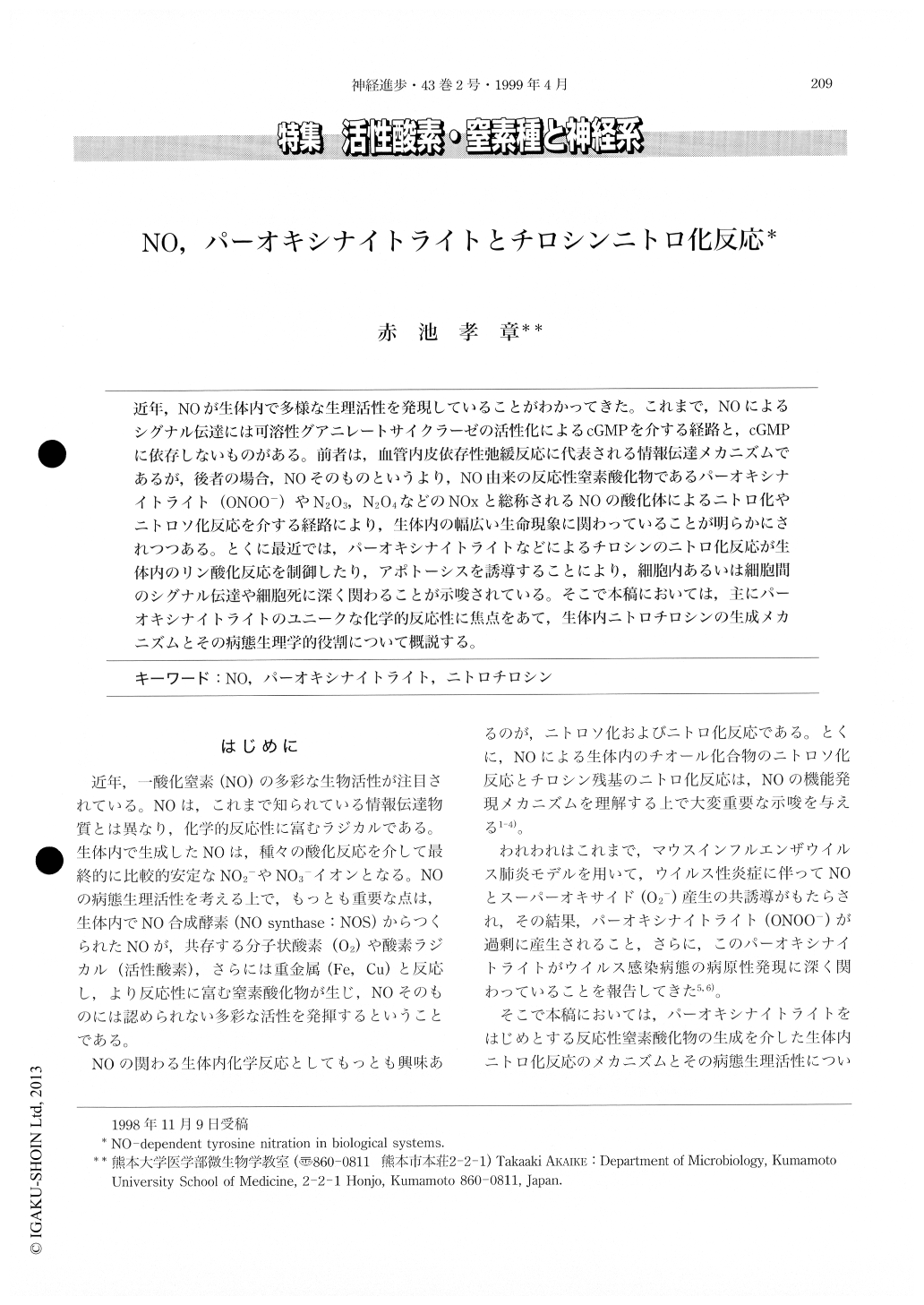Japanese
English
- 有料閲覧
- Abstract 文献概要
- 1ページ目 Look Inside
近年,NOが生体内で多様な生理活性を発現していることがわかってきた。これまで,NOによるシグナル伝達には可溶性グアニレートサイクラーゼの活性化によるcGMPを介する経路と,cGMPに依存しないものがある。前者は,血管内皮依存性弛緩反応に代表される情報伝達メカニズムであるが,後者の場合,NOそのものというより,NO由来の反応性窒素酸化物であるパーオキシナイトライト(ONOO-)やN2O3,N2O4などのNOxと総称されるNOの酸化体によるニトロ化やニトロソ化反応を介する経路により,生体内の幅広い生命現象に関わっていることが明らかにされつつある。とくに最近では,パーオキシナイトライトなどによるチロシンのニトロ化反応が生体内のリン酸化反応を制御したり,アポトーシスを誘導することにより,細胞内あるいは細胞間のシグナル伝達や細胞死に深く関わることが示唆されている。そこで本稿においては,主にパーオキシナイトライトのユニークな化学的反応性に焦点をあて,生体内ニトロチロシンの生成メカニズムとその病態生理学的役割について概説する。
Much attention has been given to a diverse function of NO. Two different NO-dependent signal transductions are now known to occur in biological systems. One is cyclic GMP (cGMP) -mediated pathway via activation of soluble guanylate cyclase, the other is through cGMP-independent mechanism. Nitrosylation and nitration appears to be critically involved in various cGMP-independent biological phenomena caused by NO. It is now well conceivable that various oxidized forms of NO such as peroxynitrite and NOx, rather than NO per se, produce nitrosothiols and nitrotyrosine.

Copyright © 1999, Igaku-Shoin Ltd. All rights reserved.


